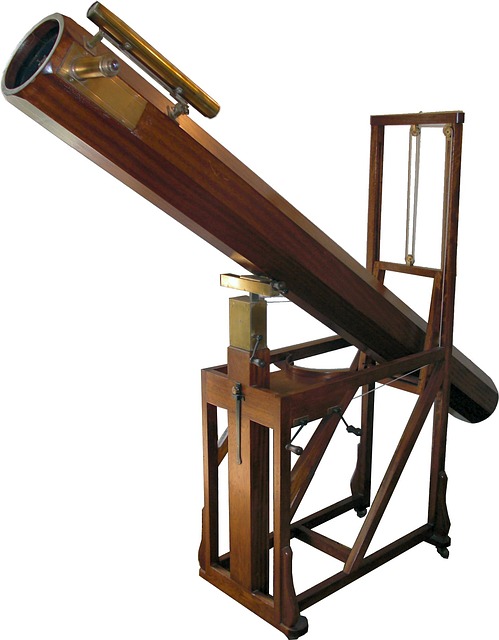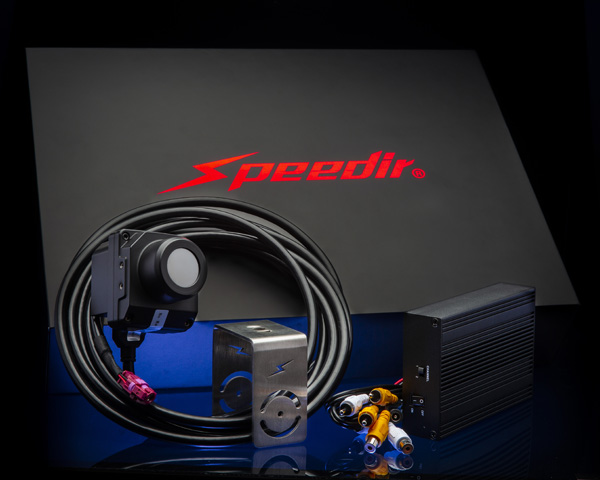The History of Thermal Imaging Cameras
Posted by Speedir Thermal Vision on 15th Apr 2020
Updated March 2023
Thermal imaging cameras are vastly different than your average camera. Where a typical camera uses visible light, a thermal imaging camera leverages infrared radiation to create images.
Infrared wavelengths lie beyond the visible spectrum. In simple terms, they are a type of radiation beyond red light. The discovery was made in the year 1800 by astronomer Sir William Herschel, who at the time was trying to devise a filter through which he could reduce the sun’s glare when observing it through a telescope. Primarily, his goal was to be able to view and study the sun through a telescope. Without adequate filters, severe eye damage was possible, even after just a few seconds of exposure.

In the experiment, he used a red filter, which seemed to produce a lot of heat. To measure just how much, he passed sunlight through a prism while holding a thermometer positioned just beyond the red end of the visible spectrum. He noticed that the thermometer registered a temperature that was higher than the ambient air in the visible spectrum, and concluded that there was another form of light beyond what could be seen by the naked eye.
Herschel dubbed his discovery the “thermometrical spectrum,” but sometimes called it “the invisible rays,” and occasionally “dark heat.” It wasn’t until the early 1900s that it started being referred to as infrared.
Further advances came in 1840 when the earliest-produced thermal images were printed on paper. Herschel called this a thermograph.
The bolometer came next. Invented by the American astronomer and physicist, Samuel Langley, the bolometer is a precision instrument that could measure accurately measure infrared radiation down to 1/100,000 of a degree, and could do so at great distances. This discovery paved the way for modern thermal imaging.
Early Uses of Thermal Imaging Technology
The first infrared camera was built in 1929. It was a motion camera used by the British army for anti-aircraft operations following WWI. The military adopted the cameras quickly, and soon the technology was a vital part of defense strategy on both sides of the Atlantic.
Thermal imaging gave the military night vision capabilities, but it wasn’t until 1947 that a camera was invented that would take still images. The process, however, was extraordinarily cumbersome, and it took an hour to produce just one image.
Once imaging speed improved, the cameras were put to use to facilitate rescue operations. Firefighters, for example, used them to see through smoke when trying to locate people trapped in burning buildings. Police use them for surveillance or to track fugitives in low-light conditions, and first responders of all stripes use them to find missing persons in remote locales.
By the end of the 20th century, thermal imaging devices were much less expensive and became more accessible to consumers. Popular with hunters and hobbyists, they also had applications in industries that include:
- In building inspections, it is used to detect termites, check for roof leaks, and locate damaged pipes.
- In medical diagnostics, it can detect the presence of inflammation, irregular blood flow, and some cancers.
- In security, thermal imaging is used to confirm and validate the presence of people at a location, such as tracking illegal border crossings or securing rural or remote areas.
Wider availability of the technology has enabled unauthorized surveillance from would-be thieves and nosy neighbors alike, prompting an outcry against what is perceived as a fourth amendment violation. Despite this, there are plenty of low-cost versions of the technology that have few, if any, legal barriers.
Decent, lower resolution thermal imaging cameras can be purchased for $300, and there are even low-cost smartphone apps that are geared to homeowners, photography buffs, and DIYers.
Thermal Imaging is Not Night Vision
Many people confuse low-light or night-vision cameras (near-IR) with thermal imaging, but there are significant differences in range, application, and function.
Besides the differences in the underlying technology, near-IRcameras need to have some visible light in order to work. If there is not at least some light, the image is not illuminated and won’t be seen. Many night-vision devices have LEDs that illuminate the area in front of the camera, but they have a much shorter range than infrared cameras.
To give you an idea of the differences, infrared imaging, such as that used by law enforcement, can accurately read license plates almost a mile away. The best near-IR cameras, on the other hand, might give you 150 feet or thereabouts, and only in the right conditions.
Infrared cameras, on the other hand, detect infrared waves from any object that emits heat. Since different objects have different temperatures, it creates contrast, helping us discern the differences between objects. Essentially, thermal imaging cameras will illuminate objects in total darkness, whereas night vision technology will not.
Thermal Imaging in the Automotive Industry
 Much of the talk about thermal imaging in the automotive
industry centers around autonomous vehicles. As an adjunct assist to GPS
systems, thermal imaging makes object detection more accurate and relevant,
ensuring that the vehicle’s AI reacts accordingly. With a long range and field
of vision that doesn’t require line-of-sight, it gives the vehicle’s AI plenty
of time to respond to obstacles ahead.
Much of the talk about thermal imaging in the automotive
industry centers around autonomous vehicles. As an adjunct assist to GPS
systems, thermal imaging makes object detection more accurate and relevant,
ensuring that the vehicle’s AI reacts accordingly. With a long range and field
of vision that doesn’t require line-of-sight, it gives the vehicle’s AI plenty
of time to respond to obstacles ahead.
In the transportation industry, thermal imaging is a huge advantage. For long-haul truckers, bus drivers, or anybody who spends a lot of time driving at night, thermal imaging keeps drivers and payloads safe and helps them to keep going despite challenging conditions.
Thermal cameras detect light below the spectrum of what we can typically see, making it safer for animals, cyclists, pedestrians, and others on the road. Driving conditions like, fog, glare, and total darkness are no longer obstacles to getting from point a to point b, ensuring that deliveries arrive safely and on schedule.
Many high-end vehicle manufacturers today include thermal imaging cameras as an option. Cadillac was the first to offer thermal imaging cameras as an option on their 2000 model Deville, but they discontinued it in 2004 due to low order volume. As the components and technology became cheaper and more accessible, they reintroduced the option in the 2015 CT6.
Today, you can find thermal imaging systems on cars from Mercedes, Audi, Honda, Toyota, BMW, and DS Automobiles.
Types of Thermal Imaging Systems for Vehicles
There are two basic types of infrared systems for vehicles; active, and passive.
Active Thermal Imaging Systems
An active illumination system leverages a near-field infrared light source that emits light at a level just below what we can perceive with the naked eye. Current cars that offer active thermal imaging systems include Mercedes, Lexus, and Toyota.
In general, the images created by an active system are much higher quality than other types of thermal imaging. Still, since it does emit light, there are some applications it is not suitable for. On the plus side, an active system works very well in warm weather and delivers high-quality images. On the downside, performance can be poor in bad weather, and the range is shorter than what you would expect in a passive system.
Passive Thermal Imaging Systems
Passive systems work by detecting the thermal radiation that objects emit. They do not require a light source. Cars that offer a passive thermal imaging system include Audi, BMW, Cadillac, DS, and Honda.
On the plus side, the range of a passive system can be significantly longer than an active system can deliver. For living objects, especially, the contrast is excellent. On the downside, the image resolution is not as good as it is with an active system. Additionally, it doesn’t work quite as well in warmer weather.
Advanced Thermal Imaging Technology with AI
Almost every industry today is taking advantage of new and exciting digital technologies, like artificial intelligence (AI), to automate processes, drive new efficiencies, and reduce costs throughout the organization.
By combining thermal imaging technology with AI detection, automobile manufacturers and logistics companies have an accessible way to increase driver safety and efficiency, reduce costs, and lower liability, driving cost-efficiencies that send value straight to the bottom line.
Speedir’s Night Owl Plus AI-equipped thermal driving camera makes staying safe easier with military-grade detection and reliability. In even the most challenging conditions, Night Owl Plus with AI detects heat signatures at up to 3000 feet beyond the range of the headlights. Once identified, the AI provides a visual and audible warning as soon as you are within 400 feet of the object.
The system connects to any automotive screen via a standard video connector or video input. Images are displayed on the automotive screen in 780 x 480 resolution, giving you a clear picture of what’s on the road ahead. Leveraging thermal and near-IR signatures, images are as clear as what you would see on a camera, even through dense fog and darkness.
Our proprietary AI platform extrapolates the infrared images and alerts you to potential threats before your headlights even touch them, ensuring your safety through even the most challenging road conditions.
Night Owl Plus is easy to install on any vehicle, and it’s an essential feature for anyone who spends a lot of time on the road. As one of the highest quality AI-assisted infrared camera systems on the market today, the price will come as a pleasant surprise. Whether you install it in your personal vehicle or equip your fleet, its value will pay dividends in added safety and peace of mind.
Reach out today to learn more about the Night Owl Plus and how we are making the world a safer place with our advanced thermal imaging technology.


